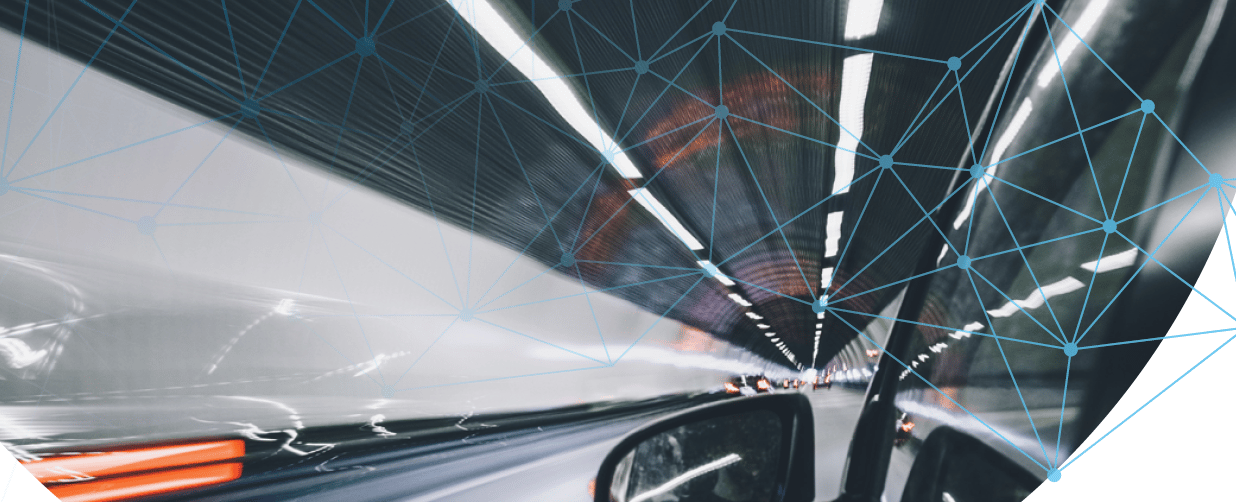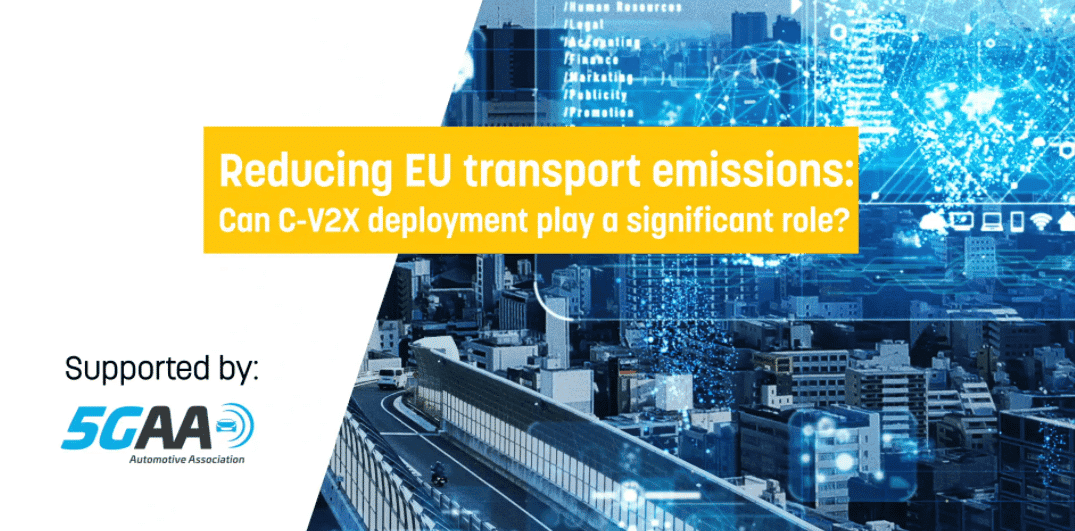
Deployment band configuration for C-V2X at 5.9 GHz in Europe
This position paper describes 5GAA’s view on deployment band configuration for C-V2X in the 5.9 GHz band. It is our view that the C-V2X industry needs to agree on a commonly applied and unique deployment band configuration for C-V2X direct communications in the 5.9 GHz band. With such an agreement, C-V2X equipment can be configured identically in all vehicles for operation in the 5.9 GHz band, thereby paving the way to interference-free operation of ITS services across Europe.
The deployment band configuration outlined in this paper addresses the initial deployment of C-V2X technologies.

Cooperation Models enabling deployment and use of 5G infrastructures for CAM in Europe
This White Paper outlines five non-mutually exclusive options for ecosystem cooperation models relevant to 5G CAM (Connected and Automated Mobility) infrastructure deployment and use. 5GAA believes these options may bring even more benefits when combined. Building upon this first assessment, 5GAA considers that in the context of the large-scale introduction of advanced safety and automated driving use cases supported by C-V2X, a more integrated model involving all parties (vehicle manufacturers, road operators, communication service providers i.e. mobile network operators and neutral host infrastructure providers) should be considered as well as other services providers who will play an increasing role in the ecosystem e.g., location-based data marketplace, Mobility as a Service (MaaS), etc.

Reducing EU Transport Emissions: Can C-V2X Deployment Play a Significant Role?
On 24 November, Euractiv hosted a debate to assess and discuss the benefits of C-V2X deployment in terms of emission reduction by 2050 in Europe.
TNO, a not-for-profit Dutch research institute, presented new research related to traffic efficiency, and the specific C-V2X functionalities that offer the biggest emission reductions and therefore a contribution to the EU’s climate goals ahead of the comprehensive Strategy for a Sustainable and Smart Mobility (part of the European Green Deal).
The Strategy proposes to match measures to the “ambition to achieve the 90% reduction in emissions by 2050” leveraging “digitalisation and automation, enhancing connectivity to the next level and last, but not least, it will ensure safety and accessibility”.
Read the Study
Watch the highlights
Watch the full event
Reducing EU Transport Emissions: Can C-V2X Deployment Play a Significant Role?
On 24 November, Euractiv hosted a debate to assess and discuss the benefits of C-V2X deployment in terms of emission reduction by 2050 in Europe.
TNO, a not-for-profit Dutch research institute, presented new research related to traffic efficiency, and the specific C-V2X functionalities that offer the biggest emission reductions and therefore a contribution to the EU’s climate goals ahead of the comprehensive Strategy for a Sustainable and Smart Mobility (part of the European Green Deal).
The Strategy proposes to match measures to the “ambition to achieve the 90% reduction in emissions by 2050” leveraging “digitalisation and automation, enhancing connectivity to the next level and last, but not least, it will ensure safety and accessibility”.
Read the Study
Watch the highlights
Watch the full event

Reducing EU Transport Emissions: Can C-V2X Deployment play a Significant Role?
On 24 November 2020, the 5G Automotive Association, in partnership with Euractiv, hosted a debate to discuss how C-V2X can contribute to reducing transport emissions.
To what extent can connected driving, with increasing levels of automation, lead to environmental benefits? To answer this question, 5GAA asked Dutch non-profit organisation TNO to conduct a study into the environmental effects of V2X communication as it is currently used in transport and as it can be used in future implementations.
During the event, the organisation presented the results of the study. These highlighted the specific C-V2X functionalities that offer the biggest emission reductions and therefore a contribution to the EU’s climate goals.
Indeed, at the time of the broadcast, the European Commission was working the Sustainable and Smart Mobility strategy, proposing measures that match the ambition of the recently updated emissions reductions goals. Policymakers aimed to leverage digitalisation and automation to create a more sustainable future for the transport and mobility sector.
Watch the video below to have some highlights of the event.

5GAA supports the European Strategic Deployment Agenda for Connected and Automated Mobility
The 5G Automotive Association (5GAA) is proud to announce the publication of the 5G Strategic Deployment Agenda for Connected and Automated Mobility in Europe (EU 5G SDA for CAM), by the 5G Infrastructure Public Private Partnership (5G PPP), a joint European Commission and European ICT industry initiative.
5GAA was among the key contributors to this document which outlines the shared view of a industry and public stakeholders, including other relevant European associations (ACEA, CEDR and GSMA) and experts of the three 5G corridors trial projects, based on eight common principles to stimulate investment in 5G-ecosystems in the field of Connected and Automated Mobility:
- Deployment of the 5G infrastructure for CAM should follow an evolutionary path to cope with future market developments and technological progress.
- The infrastructure should aim at providing boundless connectivity with continuity of service across borders, Mobile Network Operators, vendors/OEMs, as well as traffic managers, road operators and service providers.
- The CAM infrastructure, including vehicles and road equipment, needs to have a very high level of cybersecurity.
- The 5G infrastructure for CAM will need to be a multi-service/multi-application platform using standardised specifications and/or data interfaces.
- The deployment of 5G infrastructure for CAM in Europe should be extensively coordinated with public and private actors in charge of delivering V2X services.
- Road operators, road authorities and mobile network operators should collaborate to create synergies for connectivity deployment along CAM corridors.
- It is a necessity to deliver future networks innovatively and with optimal economics.
- The digital transformation of industry verticals must be accelerated.
- As recognised by the European Commission, 5G is a critical enabler of future mobility solutions and its deployment in transport, including both network and direct communication modes, is a European public policy priority. To that end a strategic partnership with road and transportation stakeholders is critical to fully address society’s connected mobility and road safety needs, as per 5GAA mission and the European Commission’s objectives.
To accelerate the infrastructure rollout, the stakeholders recognised several key drivers, such as the need for appropriate cooperation models to enable the initial deployment of 5G highways corridors, stabilising the technology roadmap through standardisation, ensuring a high level of cybersecurity, regulatory innovation, data access and data sharing, harmonisation of spectrum, and coordination of deployment initiatives.
Read the full document here

5GAA Accelerates Connected Vehicle Development with First ETSI-Approved LTE-V2X System Profile
ETSI specifications ensure interoperability, safety, and security of C-V2X technology development
In July 2020, the 5G Automotive Association (5GAA) partnered with global ICT standards organisation ETSI to organise a remote cellular-vehicle-to-everything (C-V2X) Plugtest. The LTE-V2X System Profile is the first of its kind to be specified by an independent, accredited standards organisation in Europe (ETSI TS 103 723).
The system profile provides industry wide upper layer configuration guidelines for C-V2X deployment and employs C-V2X technology from 3GPP Release 14. The system profile and the global standard it represents will lay the foundations for standardised direct cellular communications technology in the automotive sector; making product development faster and ensuring that safety and security are at the core of all new technologies.
“LTE-V2X provides a seamless evolution path towards 5G employing new radio V2X (NR-V2X). The latter will allow even better performance and further enhanced features, while keeping backward compatibility with LTE-V2X”, said Maxime Flament, CTO, 5GAA. “OEMs will especially benefit as the technology will allow long life cycles, which are essential for automotive products.”
Several automotive LTE-V2X devices were successfully tested during the second ETSI C-V2X Plugtest™ in addition to Intelligent Transport Systems (ITS) stations and Public Key Infrastructure (PKI) vendors in order to assess the level of interoperability of their implementation and to validate the ETSI ITS specifications. An overall interoperability success rate of 94% was achieved during the second ETSI C-V2X Plugtest.
To read the full report from the Plugtest, please click here.

New report released to support vehicle to infrastructure connectivity deployment
5GAA, a global cross-industry consortium working to develop end-to-end solutions for future mobility and transportation services, commissioned Ricardo to develop the report to help improve understanding of the costs, challenges and opportunities of different communication technology approaches to Vehicle to Infrastructure (V2I) use cases.
V2I is not a new technology consideration, with research and development activities related to connected vehicle applications ongoing for over two decades. However, there is now growing momentum for wider scale deployment of communication technologies in both vehicles and road infrastructure.
To date deployment activities have been fragmented and relatively slow, due to continued emphasis on research, no common vision of communication technologies and market uncertainty, making it challenging for most stakeholders to develop suitable business cases.
To help support a greater understanding of financial viability of the communication approaches implemented in the EU and US V2I market, Ricardo transport and mobility experts, supported by technical experts from Roke Manor Research, analysed a range options which include the use of a pure cellular network system and using a combination of the cellular network with direct communication interfaces via the radio spectrum.
Using outputs from extensive research and engagement with key ecosystem players, the study weighs up strengths, weaknesses and complementarity of the different communications technologies in terms of their technical performance and costs, aligning them with the different use cases. For example, the cost analysis highlights that a pure cellular deployment approach in Europe and US is 40-45% lower cost compared with deployments that include direct communication roadside units.
To recognise the opportunities and benefits identified, Ricardo’s experts have made a number of recommendations that include increased cooperation and communication of roadmaps between vehicle manufacturers, central government, road operators and cellular technology providers – in particular with the consideration of interoperability of technology solutions. Central government are also identified as playing a key role through effective implementation of financial instruments to leverage private sector investment and support wider deployment.
Denis Naberezhnykh, Ricardo’s transport technical director commented: “Increased communication and connectivity between vehicle and infrastructure have the potential to create significant benefit, not only to the user of the vehicle, but also through wide-ranging societal benefits that will positively impact the economy, community mobility and the environment. The current fragmentation of technical approaches and stakeholders has the potential to significantly slow V2I market adoption and so we’re proud to develop this report, on behalf of 5GAA, to create greater understanding of financial viability and how that aligns with technology choices, as well as to help identify where increased collaboration is needed”.
Ricardo plc is a global, world-class, multi-industry consultancy for engineering, technology, project innovation and strategy. Our people are committed to providing outstanding value through quality engineering solutions focused on high efficiency, low emission, class-leading product innovation and robust strategic implementation. With a century of delivering excellence and value through technology, our client list includes the world’s major transportation original equipment manufacturers, supply chain organizations, energy companies, financial institutions and governments. Guided by our corporate values of respect, integrity, creativity & innovation and passion, we enable our customers to achieve sustainable growth and commercial success. Ricardo is listed in the FTSE4Good Index, which identifies global companies that demonstrate strong environmental, social and governance (ESG) practices. For more information, visit www.ricardo.com.
Ricardo Energy & Environment is a leading sustainability consultancy, helping clients to respond to environmental challenges and opportunities around the world. Its team of over 450 staff draws on an impressive heritage supporting governments and businesses for over 40 years. The consultancy is an operating division of Ricardo plc. For more information, visit https://ee.ricardo.com/.
Media contacts:
Trevor Glue
Ricardo Energy & Environment
Tel: +44 (0) 1235 753429
E-mail: trevor.glue@ricardo.com
Anthony Smith
Ricardo Media Office
Tel: +44 (0)1273 382710
E-mail: media@ricardo.com

Vulnerable Road User Protection
Road safety is a crucial aspect of mobility both for individuals as well as for policymakers. Road fatalities, in the European Union (EU), for example, have decreased by approximately half between 2001 and 2018 from 54,000 to 25,100 per year. However, in recent years, the number of fatalities has been on a stable level, and additional efforts are needed to further reduce the number of deaths and severe injuries.
5GAA has made VRU protection a priority area and this White Paper therefore aims at shedding light on the safety benefit that selected V2X use cases offer, which can have a significant impact on the protection of the most vulnerable traffic participants. Ultimately, this also has a positive impact on health-sector costs incurred, by reducing the number of people suffering serious injuries with life-changing consequences.

Improving real-time traffic information in the EU in the context of possible revision of Delegated Regulation (EU) 2015/962
5GAA welcomes the European Commissions’ initiative to improve real-time traffic information in the European Union by considering a possible revision of Commission Delegated Regulation (EU) 2015/962.
In today’s fast-paced technological environment, the EU regulatory framework should be conducive of European competitiveness and foster the development of innovative business models. As such, the participation and added value of different stakeholders, both public and private, should be duly taken into consideration. The EU has successfully developed a highly competitive market in the real-time traffic information domain, in conjunction with the emergence of world-leading European companies.
Read the full document here


